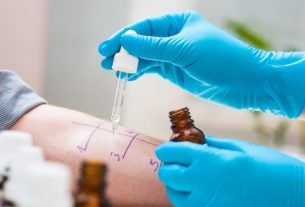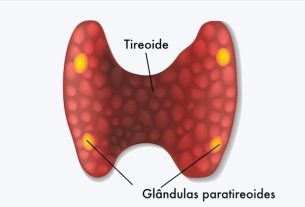Retosigmoidoscopy is an exam indicated to visualize changes or diseases that affect the final portion of the large intestine, rectum and anus, and is recommended for screening for colorectal cancer, evaluating the presence of diverticula and polyps and investigating the cause of bleeding, for example.
Rectosigmoidoscopy should be recommended by a gastroenterologist or coloproctologist. It is a simple and quick exam that can be done without sedation, despite causing slight discomfort.
Despite being an examination similar to colonoscopy, rectosigmoidoscopy differs in that it only visualizes the rectum and sigmoid colon, corresponding, on average, to the last 30 cm of the intestine. It also does not require complete intestinal lavage or sedation, as occurs in colonoscopy. Check out what it is for and how to prepare for colonoscopy.

What is it for
Rectosigmoidoscopy is an imaging test that serves to evaluate the mucosa of the final part of the large intestine, rectum and anus, identifying lesions or any changes in this region. In addition to visualizing the intestine, during rectosigmoidoscopy it is also possible to perform biopsies, so that the alteration can be analyzed in the laboratory and confirmed.
When to do
Rectosigmoidoscopy may be recommended by a coloproctologist or gastroenterologist for:
- Monitor inflammatory diseases of the rectum;
- Check for the presence of a rectal mass or tumor;
- Screen for colorectal cancer;
- Observe the presence of diverticula and polyps;
- Identify and look for the cause of fulminant colitis. Understand what colitis is and what it can cause;
- Detect origin of bleeding;
- Assess the presence of hemorrhoids, fissures and anal fistulas.
Furthermore, rectosigmoidoscopy may be recommended by the doctor to observe whether there are changes that may be related to changes in bowel habits.
How is the preparation
For rectosigmoidoscopy, it is not necessary to fast or follow a special diet, although it is recommended to eat light food on the day of the exam to avoid feeling sick.
However, it is recommended to clean the end of the large intestine to facilitate visualization of the exam, introducing a glycerin suppository or a fleet enema, approximately 4 hours before, and repeating 2 hours before the exam, as advised by the doctor. doctor.
To perform a fleet enema, it is usually recommended to introduce the medicine through the anus and wait around 10 minutes, or as long as possible without having a bowel movement. Learn how to do fleet enema at home.
How it is made
The rectosigmoidoscopy exam is simple, lasts about 10 to 15 minutes and can be done on an outpatient basis or in the hospital. Furthermore, it is not necessary to perform sedation, but it is also necessary to perform it under light sedation, as it is an exam that can cause discomfort.
To carry it out, the doctor introduces a device through the anus, called a rectosigmoidoscope, with a diameter of about 1 finger, which can be of 2 different types:
- Hardis a metallic and firm device, which contains a camera at the tip and a light source to observe the path, being able to perform biopsies;
- Flexibleis a more modern, adjustable device, which also contains a camera and a light source, but is more practical, less uncomfortable and is capable of taking photographs of the path, in addition to biopsies.
Both techniques are effective and capable of identifying and treating changes, and can be chosen according to the doctor’s experience or availability at the hospital, for example.
As the exam does not require sedation, the person does not need to be hospitalized and can return to their normal activities immediately afterwards.
Possible risks
Rectosigmoidoscopy is considered second, however, like other more invasive exams, there may be some risks of complications, such as anal bleeding, especially when a biopsy is also performed at the same time, infections and pain at the site. Furthermore, although rare, there is a risk of intestinal perforation.
It is important that the doctor is informed about any symptoms that appear after sigmoidoscopy so that an assessment can be carried out and the most appropriate treatment can be initiated, if necessary.
Bibliography
- HOSPITAL BRUNO BORN. Informed consent form for performing rectosigmoidoscopy. 2020. Available at: <https://www.hbb.com.br/site/wp-content/uploads/2020/01/FO-JUR-RETOSSIGMOIDOSCOPIA.pdf>. Accessed on October 5, 2022
- GASTROCENTRO. Flexible rectosigmoidoscopy. Available at: <http://www.gastrocentrocarioca.com.br/clinica/pdf/retossigmoidescola_flexivel.pdf>. Accessed on October 5, 2022

Sign up for our newsletter and stay up to date with exclusive news
that can transform your routine!
Warning: Undefined array key "title" in /home/storelat/public_html/wp-content/plugins/link-whisper-premium/templates/frontend/related-posts.php on line 12
Warning: Undefined array key "title_tag" in /home/storelat/public_html/wp-content/plugins/link-whisper-premium/templates/frontend/related-posts.php on line 13



